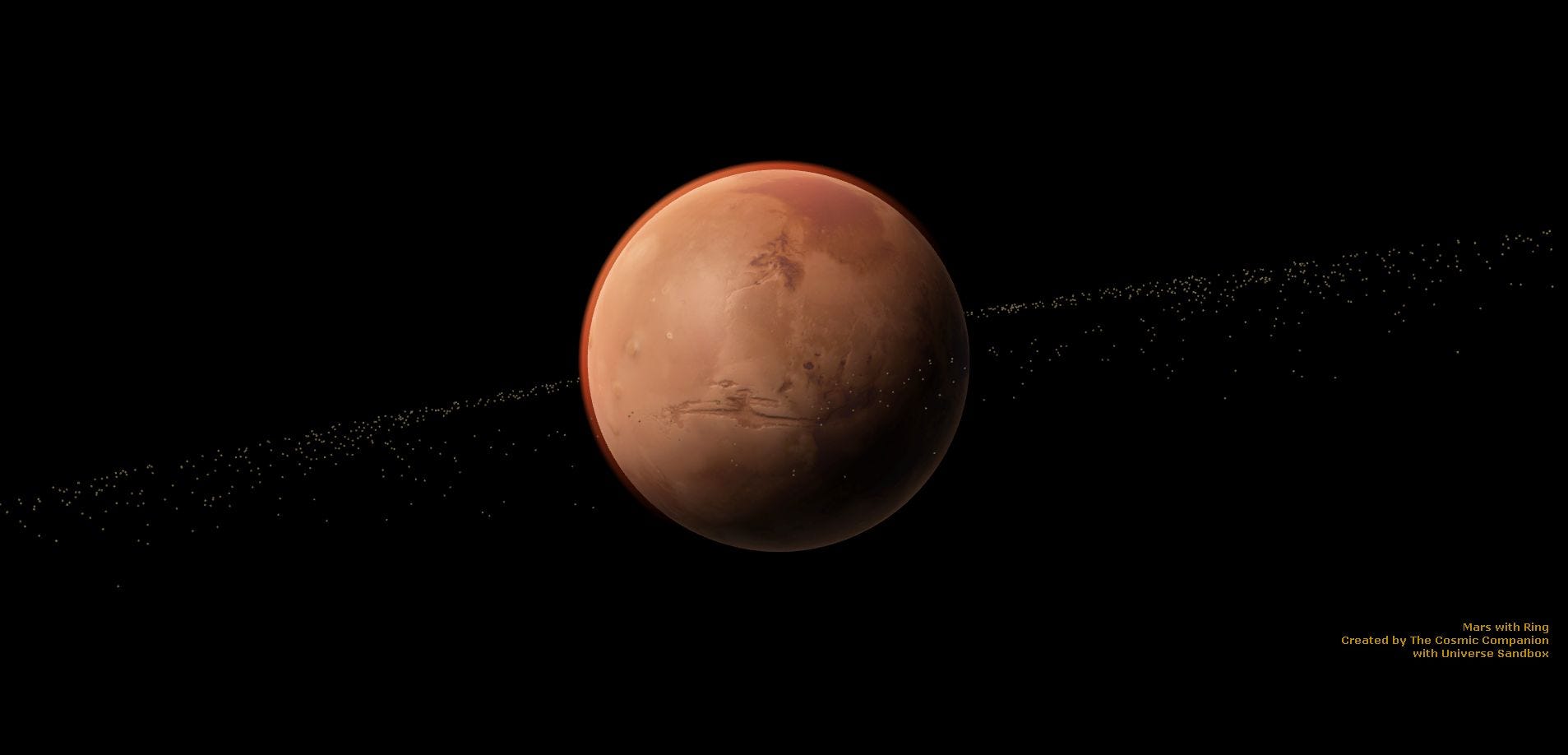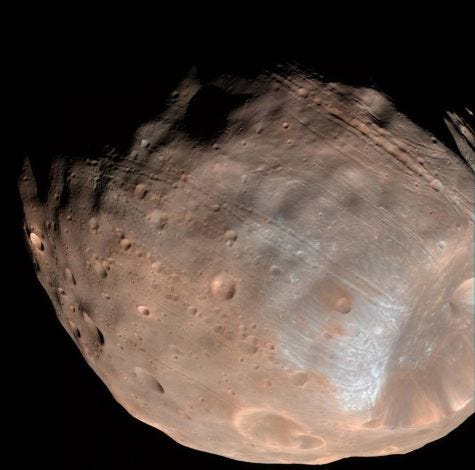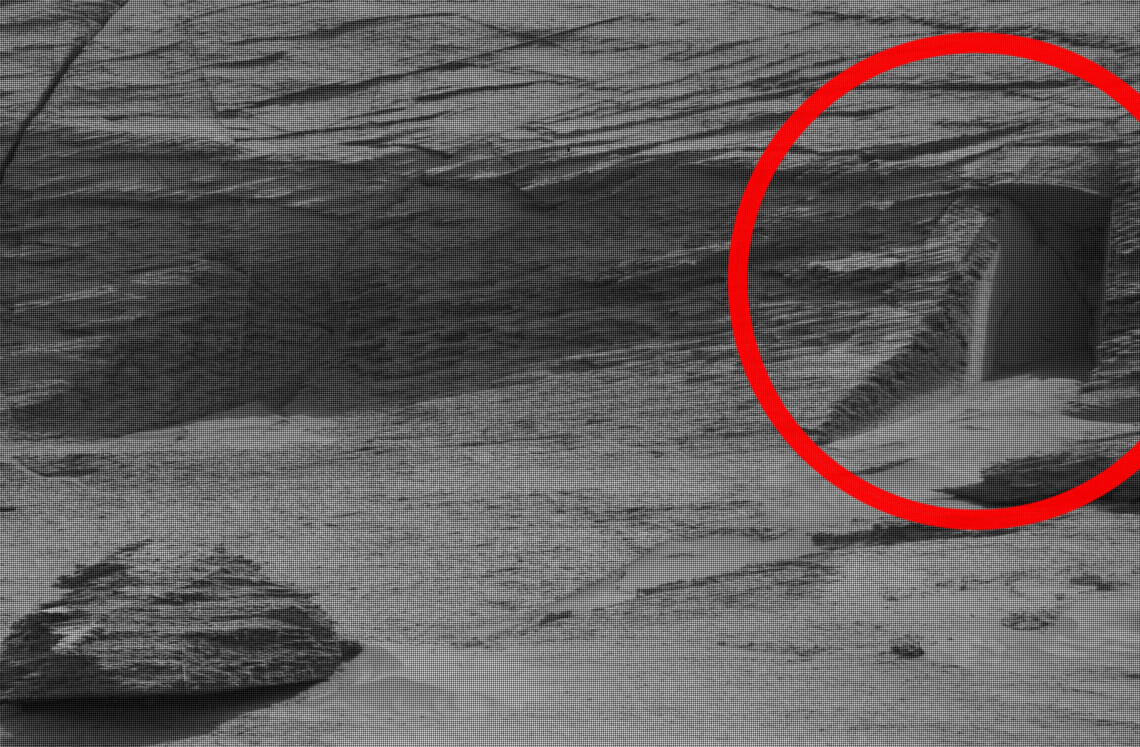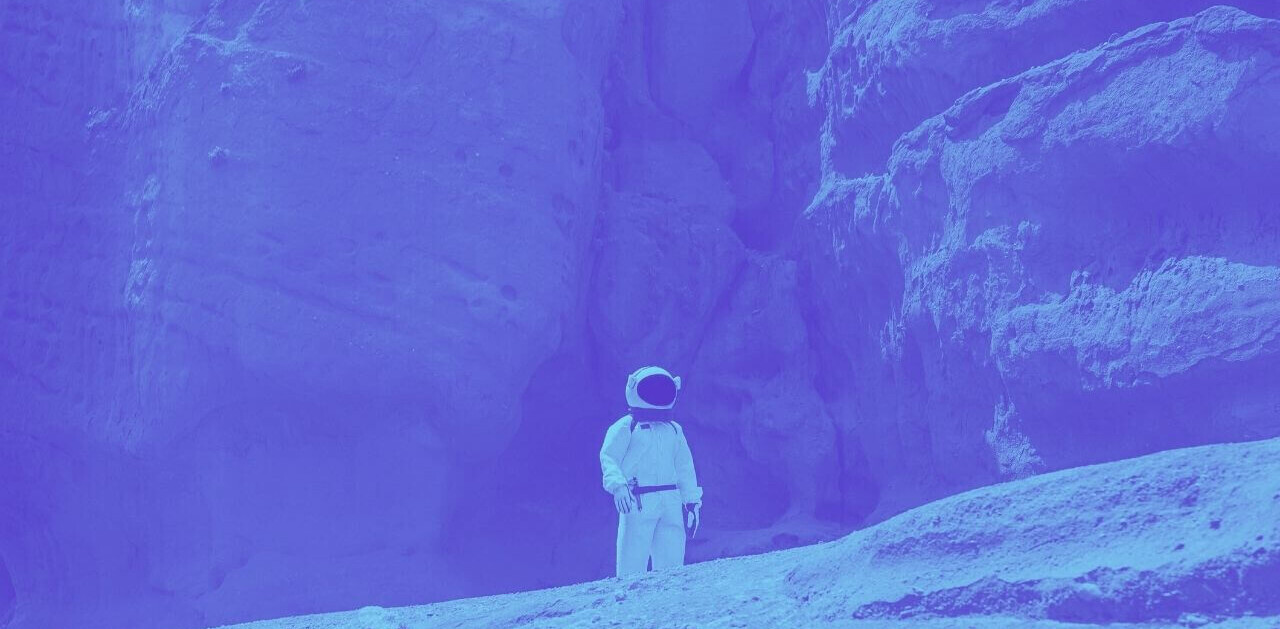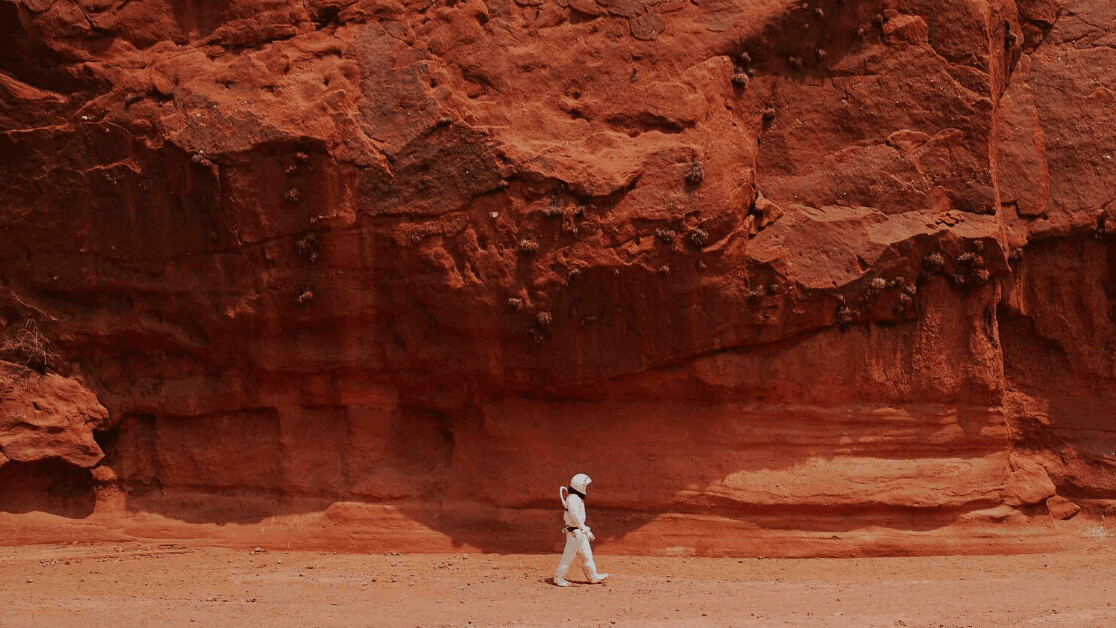
Mars is normally known as the Red Planet while Saturn is famous for its glamorous system of rings. Now, a new study from the SETI Institute and Purdue University suggests that Mars may have also once had its own planetary rings.
The two small moons of Mars, Phobos and Deimos, resemble asteroids more than they do larger moons such as our own natural satellite. Astronomers generally believe that this pair of irregularly-shaped bodies are asteroids that were captured by the gravitational pull of the Red Planet.
This new study suggests the orbits traced out by the Martian moons can best be explained if a ring of rocks and ice once surrounded the Red Planet. The orbit of Deimos is tilted about two degrees relative to the equator of Mars. This detail — often overlooked — is likely the result of an ancient belt surrounding the planet billions of years in the past, researchers speculate. The video below shows a look at what Mars may have looked like billions of years ago, sporting a ring.
“The fact that Deimos’s orbit is not exactly in plane with Mars’s equator was considered unimportant, and nobody cared to try to explain it. But once we had a big new idea and we looked at it with new eyes, Deimos’s orbital tilt revealed its big secret,” said Matija Ćuk, research scientist at the SETI Institute.</p>
The idea that Mars may have once possessed rings was first proposed in 2017 by Purdue University professor David Minton, and then-graduate student Andrew Hesselbrock.
The fear! The terror! It’s only a moon…
As Ares is when he strides into battle and Phobos (Terror) goes on beside him, his beloved son, the powerful and dauntless, who frightens even the patient-hearted warrior : these two come out of Thrake to encounter in arms the Ephyroi or the great-hearted Phlegyes (Phlegyans), but the two will not listen to prayers from both sides, but give the glory to one side or the other. — Homer, The Iliad
Phobos and Deimos, occasionally referred to as “potatoes in space,” are named after the Greek gods of fear and terror. In this ancient mythology, the pair were sons of the war god Ares (Mars) and Aphrodite, the goddess of love. Because of this, the pair also represented a fear of loss to ancient religious adherents.
The two gods were usually portrayed as unremarkable, if handsome, youth. However, in some representations, Phobos is pictured with the head of a lion.
Of the four rocky planets in our solar system, only Mars has more than one moon. While Mercury and Venus have no natural satellites, the Earth is accompanied by just our singular rocky companion.
The larger of the two worlds, Phobos, is just 22 kilometers (14 miles) in diameter — roughly the size of a city, while Deimos, discovered in 1877 by Asaph Hal, stretches just over half that size, 13 kilometers (eight miles) from side to side.
The worlds are composed of material resembling that found in carbonaceous chondrites, a type ancient asteroid that can tell investigators about the chemical makeup of the ancient solar system. Despite the name, carbonaceous chondrites don’t typically contain high concentrations of carbon. The name comes from the dark appearance of the material, a result of the physical structure of the rock.
Rockin’ in the Mars room…
Phobos, the innermost of the two moons of Mars, orbits a mere 6,000 kilometers (3,700 miles) above the surface of Mars, orbiting Mars once every four hours. It is also slowly losing altitude. At some time in the future, this small moon will skirt too close to Mars, and gravitational forces will cause it to shatter, forming a new ring for the Red Planet.
“>Deimos, meanwhile, maintains a safe distance of more than 20,000 km (nearly 12,500 miles) above the ruddy Martian surface.
The orbits of these diminutive moons are much more circular than would be expected if they were once asteroids, captured by the gravitational forces >of Mars.
Researchers suggest a cycle of moons may have formed, and shattered, repeatedly over Mars during the course of billions of years.
“The ring forms the moon on the outer edge, then the moon interacts with the ring and while the moon’s orbit grows, the ring falls onto Mars. Once the ring is gone, the moon spirals in due to Martian tides. Once the moon gets very close to Mars, it is pulled apart by Martian tides and it forms a new (less massive) ring, and the process repeats,” Ćuk described for The Cosmic Companion.
Each time, the debris formed rings which, in turn, coalesced back into moons. With some material lost with each cycle, the moons and rings became less massive.
“[At] the time of the interaction with Deimos, the ring was probably stretching out to about three Mars radii or so, and its initial mass was about 100 Phobos masses, but it lost some of that mass by the time the proto-Phobos was formed,” Ćuk explains.
This new study showed that a newly-formed moon would move away from the planet and ring in a manner which would produce the two-degree tilt. Examination of these forces reveal they could only be produced by an outward-moving moon pushing an inner moon outward, away from Mars.
This moon may have been 20 times as massive as Phobos, and this body, which may have existed three billion years ago, may be thought of as a grandparent of that Martian moon.
This new finding suggests that for much of its history, Mars was surrounded by a ring like the ones around the giant planets of our solar system (although smaller).
Deimos is billions of years old, while researchers speculate Phobos is a “mere” 200 million years old, forming around the same time dinosaurs first walked the Earth.
So far, no mission has been sent, specifically, to study this pair of minuscule moons. In 2024, the Japanese space agency JAXA will launch a spacecraft to Phobos, where it will collect a sample to bring to Earth for analysis.
This study, presented at the virtual 236th Meeting of the American Astronomical Society, held virtually on June 1–3, 2020, was also accepted for publication in the Astrophysical Journal Letters.
This idea, if correct, could provide a whole new look at what Mars may have looked like in the distant past.
This article was originally published on The Cosmic Companion by James Maynard, founder and publisher of The Cosmic Companion. He is a New England native turned desert rat in Tucson, where he lives with his lovely wife, Nicole, and Max the Cat. You can read this original piece here.
Astronomy News with The Cosmic Companion is also available as a weekly podcast, carried on all major podcast providers. Tune in every Tuesday for updates on the latest astronomy news, and interviews with astronomers and other researchers working to uncover the nature of the Universe.
Get the TNW newsletter
Get the most important tech news in your inbox each week.
